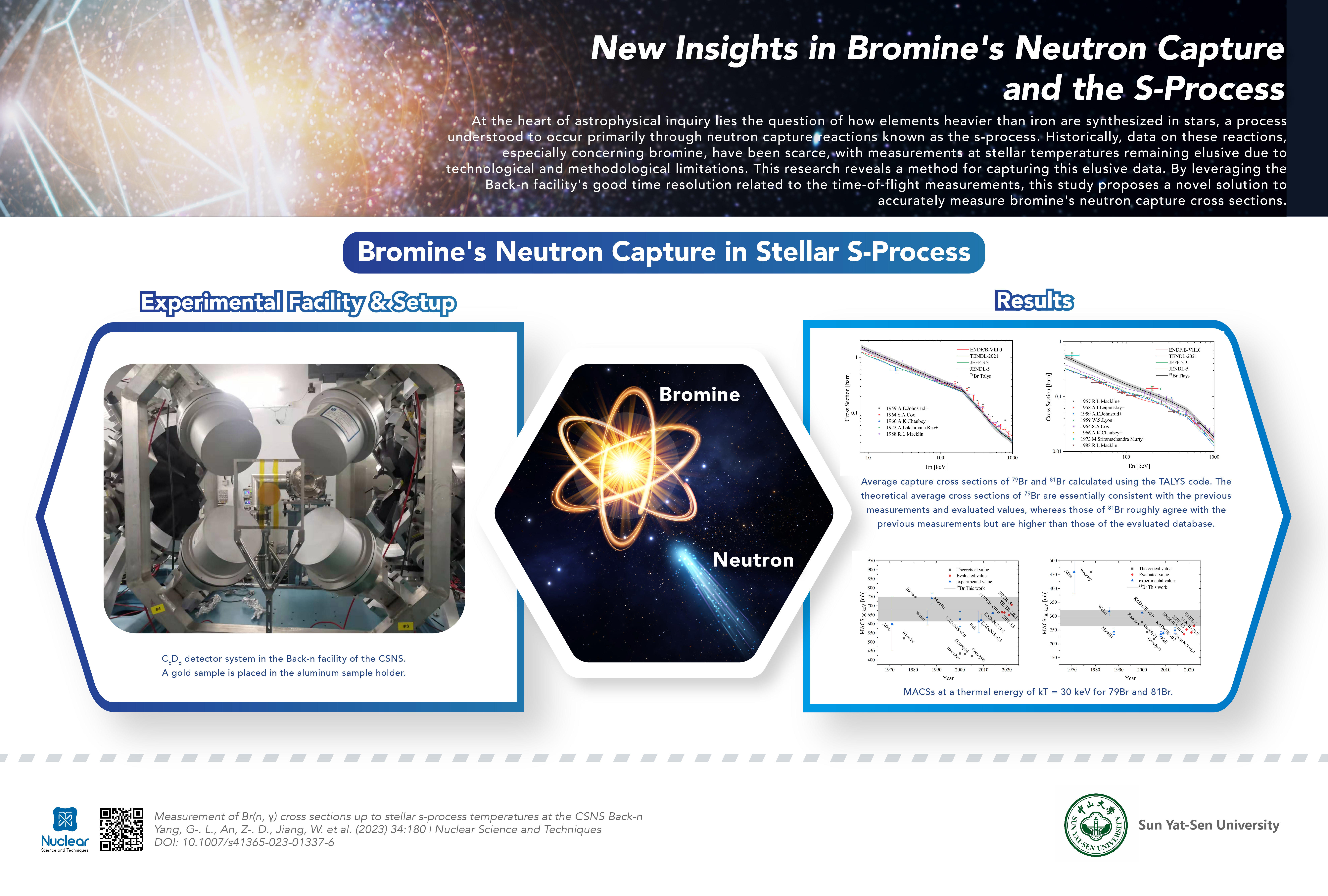Article title: Measurement of Br(n, γ) cross sections up to stellar s-process temperatures at the CSNS Back-n
DOI: 10.1007/s41365-023-01337-6
One sentence summary:
This research uncovers significant insights into bromine's neutron capture in stars, providing vital data for understanding the cosmic s-process and elemental synthesis in the universe.
Keywords:
Time-of-flight technique;Neutron capture cross sections;Maxwell average cross sections
The Novelty (What)
The study presents an innovative measurement of bromine's neutron capture cross sections in the resolved and unresolved resonance region. The astrophysical Maxwell average cross sections (MACSs) of 79,81Br from kT = 5 to 100 keV were calculated based on a sufficiently wide range experimental data of neutron energies at the CSNS Back-n facility. For the characteristic thermal energy of an astrophysical site, this research has identified that the MACS for 79Br at 30 keV stands at 682±68 mb, aligning with the KADoNiS v1.0 recommended values. On the other hand, the MACS for 81Br is significantly higher at 293±29 mb, challenging existing data of KADoNiS v1.0. These findings highlight a stark difference between the two isotopes of bromine under stellar conditions. They not only fill a critical gap in astrophysical data but also set the stage for revising the understanding of elemental synthesis in stars. With these precise figures, the research promises to catalyze future explorations into the intricacies of the s-process, potentially leading to transformative insights in both origin of chemical elements and evolution of high-mass stars.
The Background (Why)
At the heart of astrophysical inquiry lies the question of how elements heavier than iron are synthesized in stars, a process understood to occur primarily through neutron capture reactions known as the s-process. Historically, data on these reactions, especially concerning bromine, have been scarce, with measurements at stellar temperatures remaining elusive due to technological and methodological limitations. This research reveals a method for capturing this elusive data, thus promising to fill a critical gap in the field. By leveraging the Back-n facility's good time resolution related to the time-of-flight measurements, this study proposes a novel solution to accurately measure bromine's neutron capture cross sections. The outcome provides a significant leap forward in our ability to model and understand the s-process and, consequently, the genesis of heavy elements in the cosmos.
The SDG impact (Big Why)
According to the United Nations, advancements in science and technology are crucial for meeting the 2030 Agenda for Sustainable Development. The urgency for such progress is highlighted by the ongoing challenge to harness clean and sustainable energy sources, a pursuit vital for global development. This research contributes to SDG 7, Affordable and Clean Energy, by enhancing our understanding of nuclear processes, which could be pivotal in developing advanced energy systems. Furthermore, it supports SDG 4, Quality Education, by providing new scientific knowledge for academic curricula, fostering a more informed and innovative generation poised to tackle the world's energy and sustainability challenges.
Graphical Abstract



